Milky white gemstones with colourful sparkles symbolise the love for translucent dazzlers. Yes, glassy and clear gemstones like diamond, garnets, rubies, sapphires and emeralds remain the top eye-catchers. But there is a certain attraction that makes opals, moonstones and agate very popular. The optical phenomenon of adularescence is what renders these gemstones their enticing beauty.
What is an adularescent gemstone?
Crystals exhibiting the Schiller effect are called as adularescent stones, which is very similar to the labrador essence and adventure scene. Adularescent gemstones exude a milky and bluish glow originating from the diffused structure within the crystal. The schiller seems to move within the stone, and hence gives an effect of the light source moving as well. Orange and blue lustres are commonly seen in the gemstones.
Why adularescent?
The name ‘adularescence’ is derived from the gemstone called Adularia. Adularia itself derives its name from the location where it was first discovered. Adularia is orthoclase potassium-enriched feldspar found in Adula Massif, Ticino (Tessin), Switzerland in 1780.
The degree of schiller effect in the gemstones other than Adularia is a highly varying and hence remains a scattered phenomenon. In non-Adularia gemstones, schiller effect appears along with ‘girasol effect’and opalescence. Some gem experts like to connect adularescence with indistinct bands of chatoyant effect. In other words, adularescent gemstones are likely to showcase cat’s eyes effects and asterism.
Adularescent Moonstones:
Labradorescence and adularescence are related terms as far as optical phenomena are concerned. Both of them are seen in moonstone Gemstone and Labradorite in equal intensity. The similarity arises due to their origin from feldspar.
Moonstone has two feldspar minerals in it- orthoclase and albite. Adularescent moonstones exhibit intermingling of the minerals and result in a new ingrown stacked in alternate rows. The light scatters randomly between the thin lines and layers causing a blue sheen. When the moonstone gemstone beads are viewed in different angles, the misty light also rolls in action.
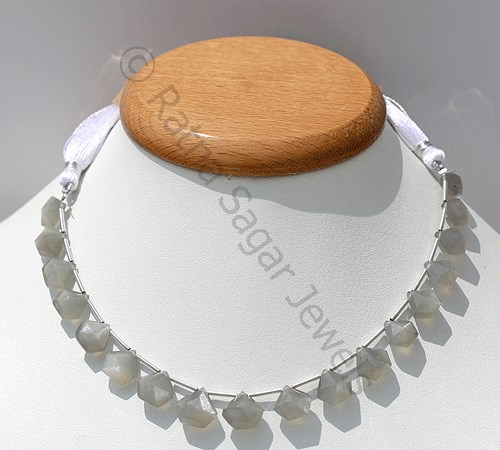
How to check for a real Moonstone:
Moonstones are approved of their originality by checking three factors:
- Background colour
- Surface colour
- Sheen orientation
The adularescent gemstones are semi-transparent and colourless, with sheens bearing shades of blue, silver and rose. Rainbow moonstone show multiple colours like green, yellow and brown-grey. In terms of pricing, brighter the shade, higher will be the cost. High valued moonstones exhibit a 3-dimensional depth in blue shade. Blue moonstones necessarily command a higher price than milky and transparent adularescent gems.
How cut makes a difference?
Moonstones are often shaped in the beads and balls, stranded in necklace and bracelets. The adularescent moonstone is cut in cabochon that multiplies the sheen and clarity of the colours. Oval moonstones cut in cabochon remains top collections, apart from the Fancy Cut and Pointcuts with the square base.
For uniform adularescence effect, moonstones are never given a long flat base. They diminish the effect and also take away the sheen and clarity. In short, flat based moonstones are not as attractive and glittery as the cabochon ovals.
Save
9ea2cb49-c974-49df-8156-fcd23822d689|0|.0|27604f05-86ad-47ef-9e05-950bb762570c
Tags
: Moonstone Gemstone Beads . Grey Moonstone Beads . Grey Moonstone Beads India . Moonstone Beads India
Mankind has always been drawn to the mystical skies shinning with uncountable number of stars. Since time immemorial, numerous artworks have been inspired by the stars and planets twinkling. And when someday, gemstones with starry dazzle were discovered, it meant owning the stars. Meanwhile not all gemstones known to man exhibit the starry dazzle and it is an exclusive phenomenon. But why is that? That’s because, it is an optical property based on the crystal structure.
What is the phenomenon called?
The property is called asterism. Asterism is an optical phenomenon that occurs sparingly in some gemstones. When the light beam passes through the crystal, it showcases star-shaped figure. In astronomy, asterism is defined as a pattern of stars. It is very different from what we know as a constellation. Asterism is a pattern of stars or constellations which may not be recognised in any form.
Types of Asterism:
There are two distinct types of asterism exhibited by the gemstones found naturally. They are:
Seen in sapphire gemstone and garnet beads, epi-asterism is caused due to the reflection of the light along the parallel planes formed from inclusions/ rutile within the gem crystal.
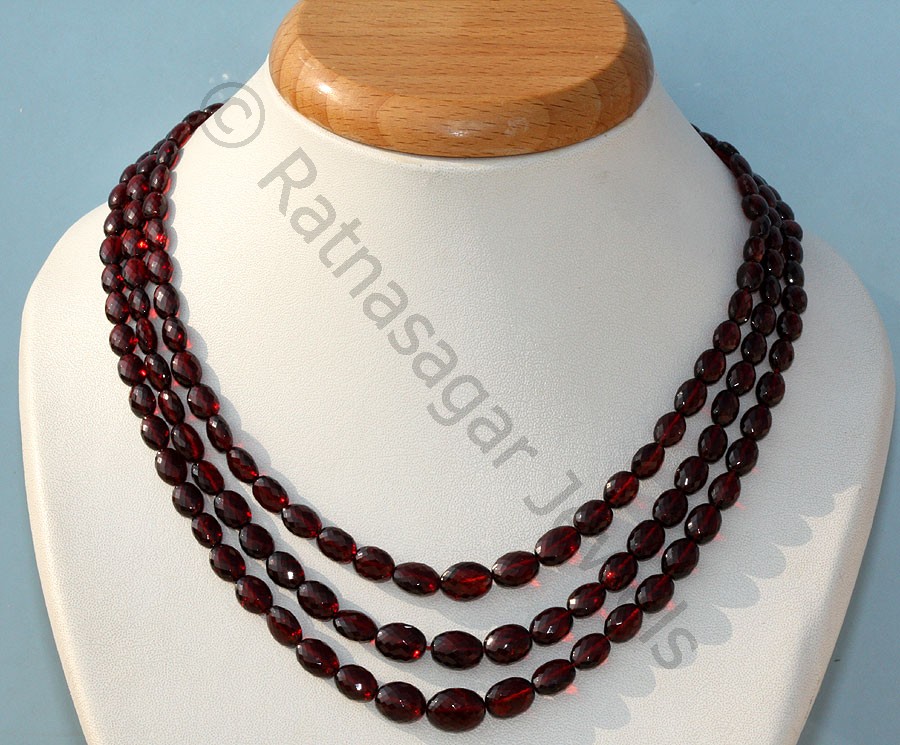
Commonly seen in the Rose Quartz, the phenomenon is seen when the light source is behind the stone. The phenomenon is seen in crystals with milky and opaque appearance.
In short, di-asterism in gemstone is caused by a transmitted light, while epi-asterism occurs due star formation from a reflected light beam. Diffused light sources don’t form star shapes in the gemstones.
Asterism in Sapphires:
The first instance of gemstone asterism was discovered by the Greeks. The cuts necessarily enhance the phenomenon. For example, star sapphires cut in cabochon display six-rayed star pattern. Other stones that exhibit the property are rubies, topaz, chrysoberyl and moonstone. The presence of titanium oxide particles, called rutile, gives the gemstones their trademark asterism.
Gemstones with asterism have always been linked to folklore and superstition. They were believed to ward off evils in the dark and keep the faith strong. Star Spinel, garnet, Diopside and sapphires were specifically cut to enhance the healing properties of the protective gemstones.
Asterism in Quartz:
Pink and red quartz exhibit asterism that occurs due to transmitted light. Citrines also reveal asterism when heated to a certain temperature. The heating dissolves the finely lined rutile particles an align them to form stars. Round cut quartz are known to showcase exciting play of star formation, with interesting planes.
Asterism in Synthetic gemstones:
Synthetic corundum is aluminium oxide which is largely produced to replace diamonds in cutting and abrasive tools. The asterism is seen in corundum gemstones.
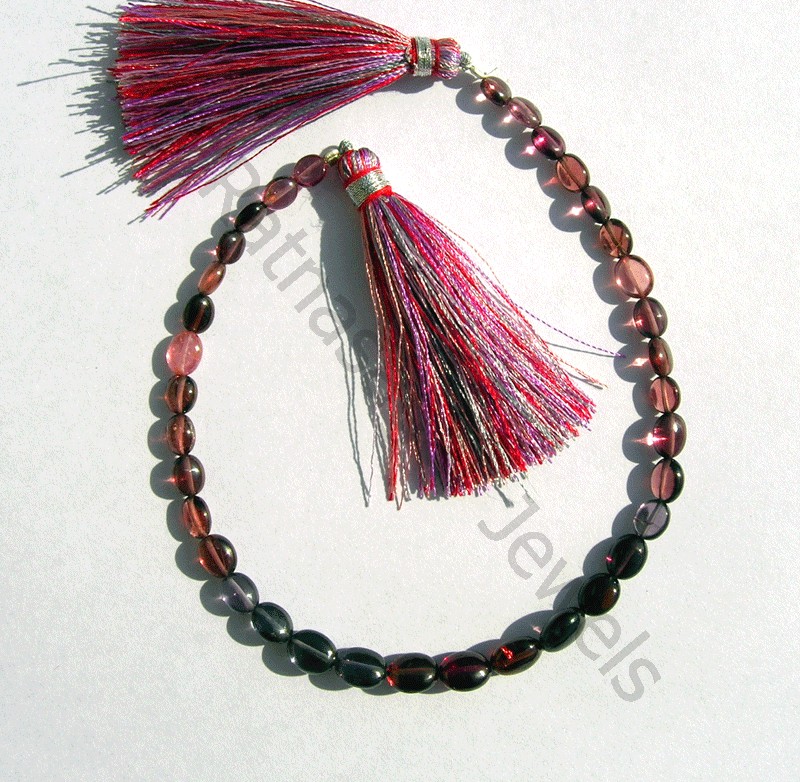
Commercial influence on Star gemstones:
Asterism is a key commercial feature that makes the gemstone look rarer in the market. Star beryl and star spinel gemstones are anyways rare, which are complemented with immaculate cuts and shapes. Star gemstones too have to meet the 3 C’s parameter to qualify as precious item: Colour, clarity and Carat.
Save
Save
2db51136-9c4d-4919-9199-21a62215c1ce|0|.0|27604f05-86ad-47ef-9e05-950bb762570c
Tags
: Rose Quartz . Sapphire Gemstones . Garnet Beads . Spinel Gemstones
Tourmaline gemstones and Paraiba are now commercially accepted as synonymous with each other. Considered as an electrifying item for jewellery and fashion, tourmalines bearing this characteristic shade owe their origin to north-eastern parts of Brazil. Much later, the sizzling varieties in effervescent green-blue were mined from Mozambique and Nigeria. If you are planning to buy a Paraiba tourmaline, there are chances that you might get confused between the ones coming from Brazil and those mined from Africa.
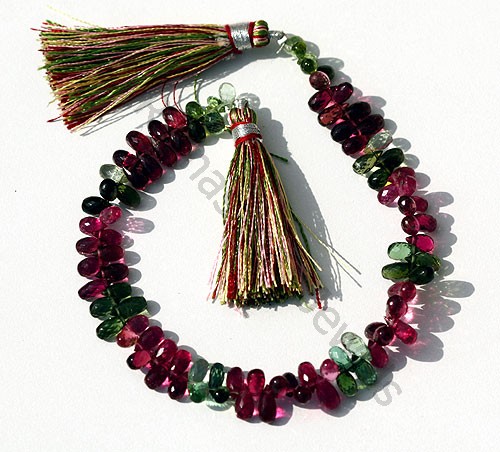
How are they different? Does it really count if they are from different sources? How to tell the difference between the two?
In terms of physical differentiation, it is very hard to find the variation between the Paraiba tourmalines from Africa and Brazil. Even under the microscope, they are hard to be differentiated.
So, how to differentiate? The only way gem labs can find the difference is by using quantitative chemical testing. Origin-wise, gem collectors rank Brazilian tourmalines higher than the ones mined from Africa. The African tourmalines have a reputation similar to what Burmese rubies enjoy in the gem lines.
History of Paraiba:
One of the recently discovered naturally occurring gemstones, Paraiba tourmalines have a history dating back to 1980s, when Heitor Dimas Barbosa and his assistants dug out pegmatite deposits in the hilly areas of Paraiba in Brazil.
Why are Paraiba gemstones so popular?
The shady electrifying blue shade in the Paraiba tourmalines matches the beauty of blue sapphires. The blue colour appears due to the presence of copper oxides and hydroxides. Brazilian stones are darker in colour compared to their African counterparts by virtue of higher copper ions in the crystal structure.
Paraiba tourmalines exhibit a variety of colours ranging from sky blue to aquamarine to psychedelic blue. Highest variation in colour shades is observed in Mozambique Paraiba tourmalines.
World’s most famous Paraiba:
The Guinness World Records rank stunning Ethereal Carolna Divine Paraiba as the world’s largest, flawlessly cut naturally occurring Paraiba tourmaline in the world. It weighs 191.87 carats and is enlisted in the same bracket as Logan Sapphire, Hope Diamond, The Golden Jubilee and Alan Caplan Ruby.
The Ethereal Carolina Divine Paraiba is an oval shaped tourmaline featuring Brilliant Cut, and is four times heavier than the second largest tourmaline ever mined. The stone now graces as a part in the necklace called Paraiba Star of Ocean. It entered the ranks in 2009 when the stone featured in the necklace designed by Canadian jewellery house- Kaufmann de Suisse.
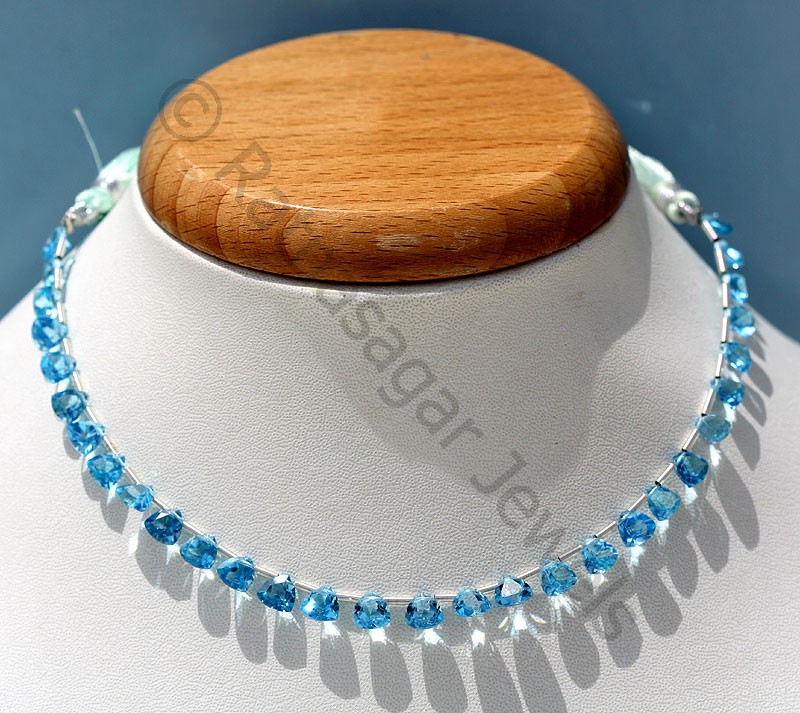
This tourmaline exhibits a radiating neon blue-green colour very distinct from the traditionally mined stones. It is best described as the blue of the tropical ocean. Even the necklace it is fit into has been inspired from the aqua flora and fauna. A compliment to the marine animals like turtles, shells crabs, star fish, rays and sea horses, Paraiba tourmaline is flanked by the likes of canary yellow diamonds, blue, orange sapphires, ruby, garnet, emeralds, blue topaz gemstones and Tsavorite. The 191.87 carat Carolina tourmaline easily exceeds the size of all other gemstones.
Save
f3fc1f13-f5a4-480d-a299-9f36064d2a80|0|.0|27604f05-86ad-47ef-9e05-950bb762570c
Tags
: Tourmaline Gemstones . Paraiba tourmalines . Yellow Diamonds . Orange Sapphires . Blue Topaz Gemstone Beads
Rose cuts are not new as they are often quoted to be. There have been instances when diamond dealers rate the rose cut as 20th-century phenomena. Breaking the norm, rose cut diamonds were pretty much the regular jewellery items in Antique and Heirloom collections. First rose cut diamond was made in the 16th century. This cut continues to win hearts and remains one of the most sought after stones in the modern jewellery sets.
Why are Rose Cut diamonds named so?
The diamonds are cut in the shape resembling the open petals of the rose with the spiralling pattern. When cut in the shape of the rose petals, the diamonds have a flat bottom and a larger surface area. This opens the surface to exhibit the brilliance even more emphatically. They feature triangular facets in the multiples of 6 on the tipped crown of the diamond.
Why rose cuts lost the charm?
Undoubtedly, the rose cut diamond were symbolic representation of the Moughal glory in India. One of the most popular medieval gemstones is the Great Mogul, owned by Shah Jehan. The French traveller and gem collector, Jean Baptiste Tavernier,as one of the most beautiful stones he has ever seen.
Between 18th and 19th century, rose cut diamond lost the position significantly. New machining tools and cutting saws rendered the rose cut diamonds as out of fashion. They were largely replaced by the Brilliant Cuts Diamond. The popularity of Table Cuts and Point Cuts in diamond gems made the floral shaped diamond stones all the more obsolete in the 18th century.The cut returned with a bang when the gem collectors tagged this as synonymous with the “engagement” and “romantic” stories.
What are different versions of rose cut?
Rose cuts are made on the diamond in an upside-down manner. The flat base is complemented by the dome-shaped crown converging at the centre of the stone. The different names of the Rose cut are Crowned Rose Cut, Full Holland Cut, Antwerp rose, Dutch Cut and the very popular Antwerp Rose cut diamond is machined in a hexagonal shape.
The Rose Cut Diamonds can be cut into 24 facets and 48 facets (called Double Dutch Rose). If you observe closely, the "Briolette Cut diamond" is actually a modified twofold Dutch Rose cut which has half of its hemisphere elongated against the other hemispherical half.
Another prominent variety of the cut is the Senaille Cut which has notable unsymmetrical facet.
Rose Cut Diamond Solitaire: The Magic
Considered as a regale cut, Rose Cut is used extensively in diamond solitaire, re-introduced with brilliant clarity and pristine lustre. The open mouth cut allowed the light to pass through the crystal freely with no hindrance in the setting.
Almost all diamonds can be cut into Rose. The most prominent factors to determine the feasibility of cutting a diamond into Rose are width and depth of the stone. Symmetry and crystal alignment are secondary factors that lapidary artists look for before going ahead with Rose Cut.
ad27bde9-22ff-49b7-8ca5-756b59643224|0|.0|27604f05-86ad-47ef-9e05-950bb762570c
Tags
: Rose cut diamonds . Brilliant Cuts Diamond . Briolette Cut diamond
There are exclusive gemstones named specifically as per the colour they reveal. For instance, Turquoise, aquamarine gemstone, opal, lapis gemstone and many more are only a handful of an exhaustive list. And then, there are others that have an effervescent optical characteristic of changing colours depending on the angle you view them, or on the way light falls on them.For example, Alexandrite runs a beaming green shade in daylight and mysteriously transforms into richly blue under fluorescent light.
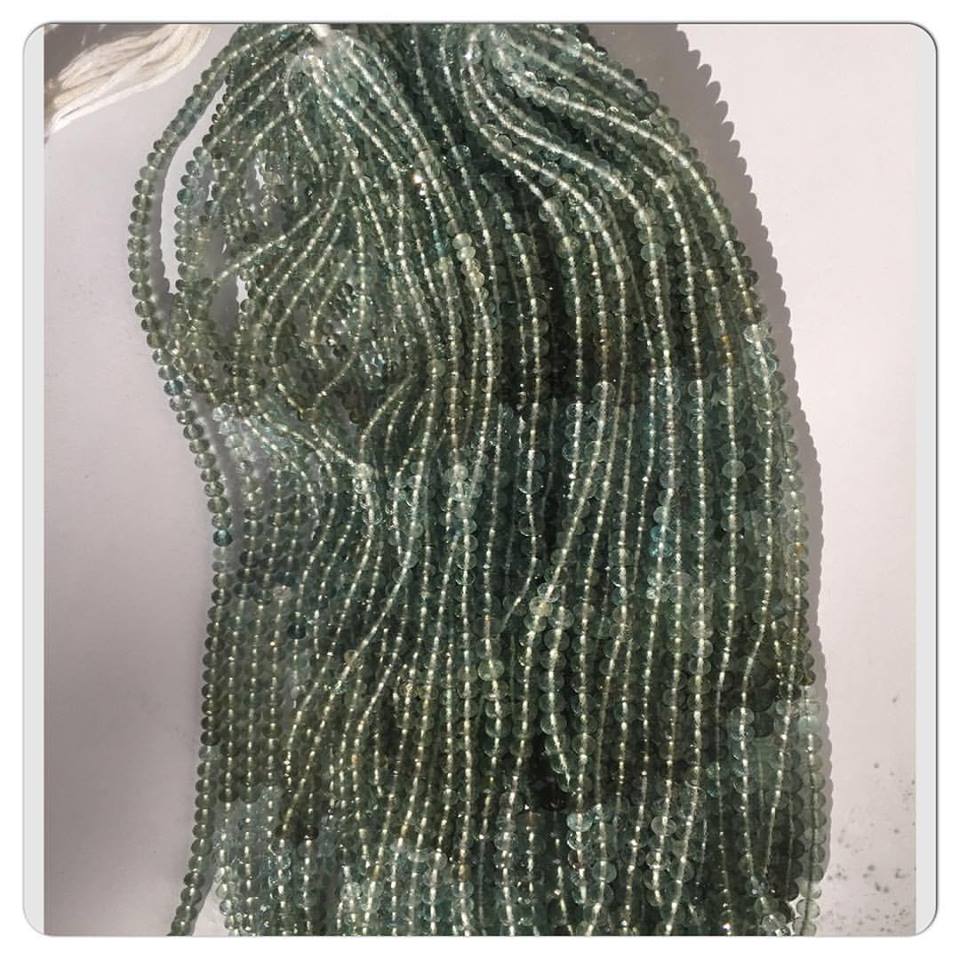
If that is not enough, the same stone displays a majestic play of orange and red colour when exposed to incandescent light.
How distinct is colour change phenomenon in gemstones?
Colour change is a well-recognised optical phenomenon that occurs in a gemstone when exposed to different wavelength of light. This optical property is observed in sapphires and garnets too, but it is exclusively called “Alexandrite Effect”.
What is Alexandrite?
A type of chrysoberyl, Alexandrite is an orthorhombic gemstone named after the Tsar of Russian, Alexander II (1818-1881). Discovered for the first time in the Urals near River Tokovaya in 1834, the gemstone gained immense popularity only after master gemstone George Frederick Kunz produced some of the most magical platinum and diamond ensemble featuring Alexandrite.
What contributes to the Play of Colour?
The chemical composition complemented by the crystalline structure and its double refraction index of 0.009 gives the stone its majestic optical brilliance. Just like its optical phenomenon, the crystal itself so very rare in the nature. Alexandrite is not a regular chrysoberyl. In addition to iron and titanium oxides, the gemstone also contains traces of chromium. Some minor traces of vanadium and gallium are also present but they are considered as impurities, rather than featuring as colouring agents.
Due to the presence of so many ions, Alexandrite reveals a show of colour ranging from green to yellow, brownish red to purple, yellow green to bluish green.
The most genuine form of gemstones:
Alexandrite is rarest gemstone to make it to the collector’s list. They are mined from Sri Lanka, India, Madagascar, Zimbabwe, Burma, Tanzania and Brazil. Synthetic Alexandrites are yet to be produced with satisfying results. They remain untouched by the heat treatments and dyeing agents that mark the markets for sapphire and rubies.
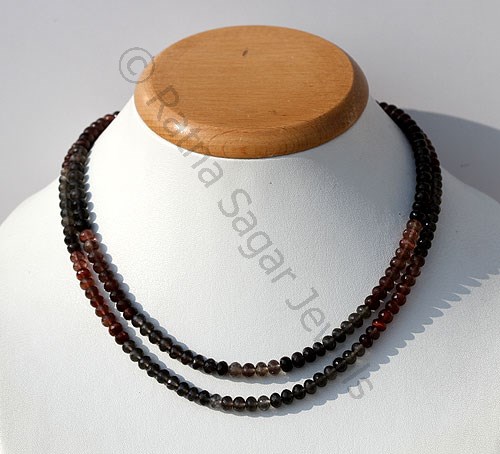
A true gemstone bearing the tag of Alexandrite always exhibits two optical phenomena: Cat’s eye gemstone or chatoyancy and change of colour.
Cut and Clarity:
Alexandrite is blessed with clear lustre and rarely has any inclusions. It’s the inclusions in sparing numbers that give the gemstone its chatoyancy property. Often cut in mixed cuts, aristocrats prefer uncut Alexandrite owing to the rarity and save weight. They are mostly available in cut form weighing less than one carat.
However, some world-famous Alexandrite stones are actually way heavier than standards. For example, the 17.08 carat Whitney or the 43 Carat Gem or 66-Carat Gem… they all are big and magnificent.
Perfect engagement gifts revered by the lovers all over the world- The Alexandrite Russian rings set on platinum.
57c18e2c-b8ef-48a3-ac3e-54f4643dbe64|0|.0|27604f05-86ad-47ef-9e05-950bb762570c
Tags
: Lapis Gemstones . Aquamarine Gemstones . Cat’s eye gemstone . Wholesale gemstone beads
Garnet bracelets are one of the world’s oldest recognised forms of gemstone jewellery. The Romans were known to adorn the rings and crowns adorned with garnet gemstones of different sizes. They continue to be as impressive as they used to be in the 15th century.
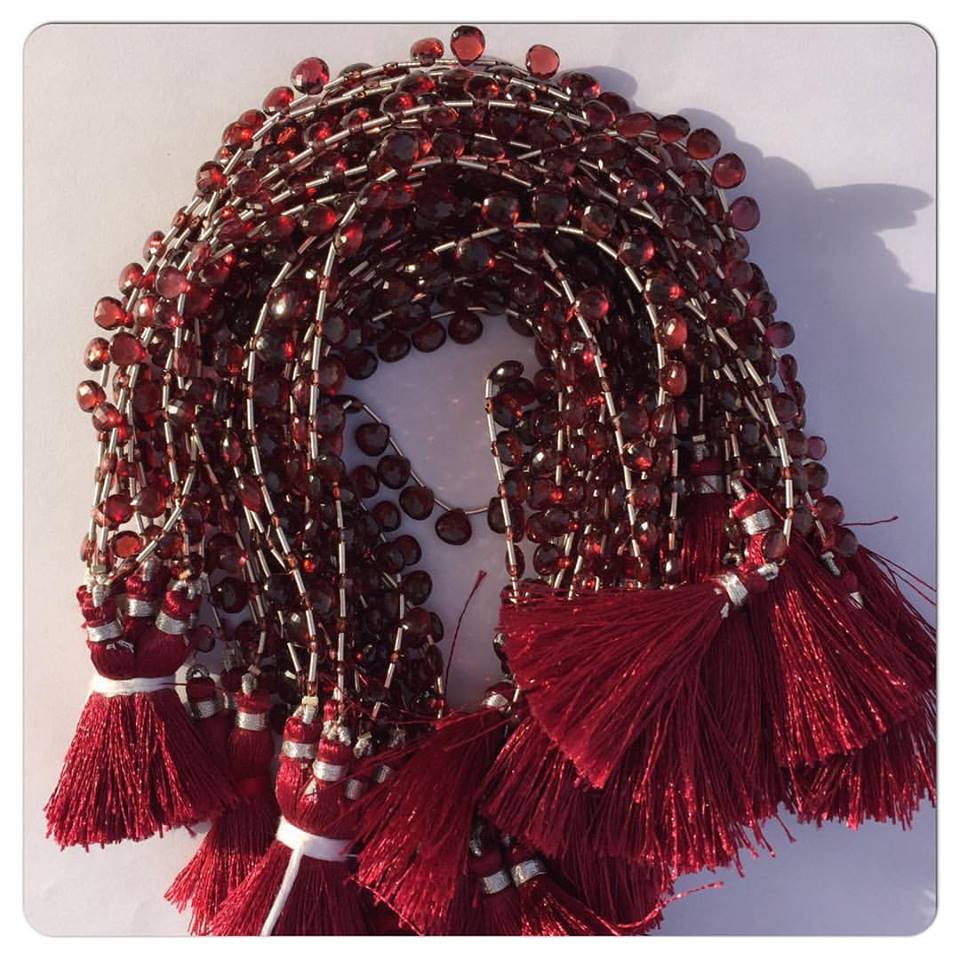
Garnets look like Pomegranate grains!
Yes, they do resemble the fruity grains. And that is why they are named from Latin word “Garanatus” that translates to “like seeds of pomegranate”. Small garnets are brighter in shade than the bigger ones. If you have difficulty analysing the authenticity of the garnet, get it tested under a refractometer. There are many varieties of garnets. Some of the popular varieties are:
- Pyrope
- Almandine
- Grossular hessonite/ tsavorite
- Uvarovite
- Andradite
- Rhodolite
- Spessartine
Here are some less common, but very precious garnets available in the market sparingly.
- Goldmanite
- Morimotoite
- Katoite
- Hibschite
- Kimzeyite
- Schorlomite
- Majorite
- Calderite
- Hydro-grossular
- Knorringite
- Kimberlites
World of synthetic garnets:
Garnet is one of the easily synthesised gemstones in laboratories. Apart from silica, calcium and magnesium, garnets crystals can be impregnated with ions of Germanium, Gallium, Aluminium, Vanadium and Iron.
Very similar to zirconium, garnets too have their own series of synthetic gemstone members. Yttrium aluminium garnet- YAG, is one of the most popular and commercially accepted garnets to have made it big in the market. Other significantly popular synthetic garnets are Yttrium iron garnet- YIG, and Gadolinium gallium garnet- GGG. All synthetic garnet beads are coated with a film of magnetic substrate to replicate the magneto-optical properties as seen in the real gems.
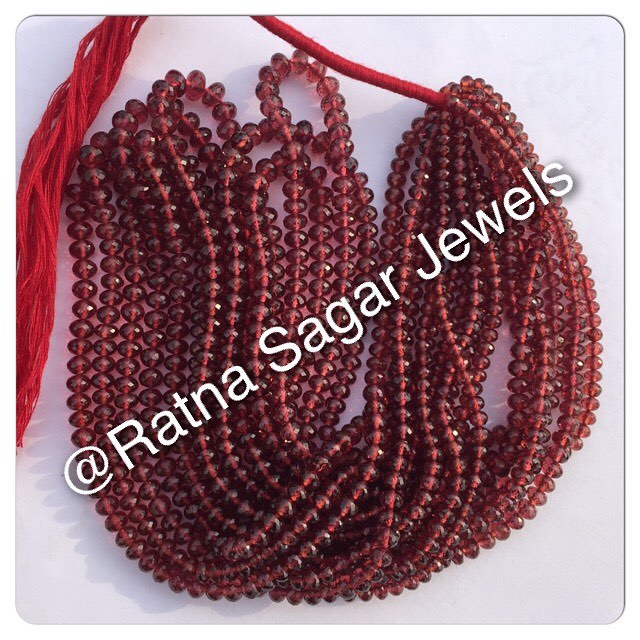
So, how to identify a real garnet?
Physical testing for hardness, colour, magnetic properties and abrasive nature are popular methods used to separate original garnets from the synthetic ones.
Colours of garnet:
Garnets used in modern day jewellery exhibit myriad colours like red, orange, yellow, green, purple, brown, blue, black, pink and burgundy. Some garnets are pale and colourless as well which can be coloured after heat treatment.
Darker the colour of the garnet, older is the age of the gemstone. Depending on the diffusion, garnets can have shallow colouring as well as core colouring.
Discovered in 1990s, there is a special family of garnet called Blue pyrope–spessartine garnets. They exhibit multiple colour hues when observed from different angles. The colour changes from shades of green to purple, depending on the diurnal temperature and natural slight intensity.
Hardness:
Garnets is one of the hardest naturally available material on the planet. The synthetic garnets have hardness measured in Mohs scale. They could be anywhere between 6.5 and 7.8.
Magnetic Properties:
Easily the most authentic method to detect original garnets, magnetic susceptibility to neodymium magnet is a common feature among end members of the series.
But hey! Like all gemstones, garnets too can be faked and forged with impressive adulation. That is why there are certain restrictive trade regulations to keep only original garnets in the market. Find and assess gemstone certification that is tagged on every garnet.
Save
Save
add09ca5-1ec4-4bb8-afc5-54af7dd1d685|0|.0|27604f05-86ad-47ef-9e05-950bb762570c
Tags
: Garnet Beads . Garnet Gemstone Beads . Garnet Beads Suppliers . Natural Garnet Beads
3. August 2016 06:41 /
Manoj
/
Comments
(0)
Rubies and sapphire gemstones available in the market are available in two forms. One category would be heat treated with additives, and another would be those without additives. It is obvious that though heat treatment is done to improve the colour of the gemstones, adding extraneous stuff to the crystal structure actually means that there has been physical distortion with the original gemstone. In short, gemstone that has been heat treated with additives is what you should stay away from.
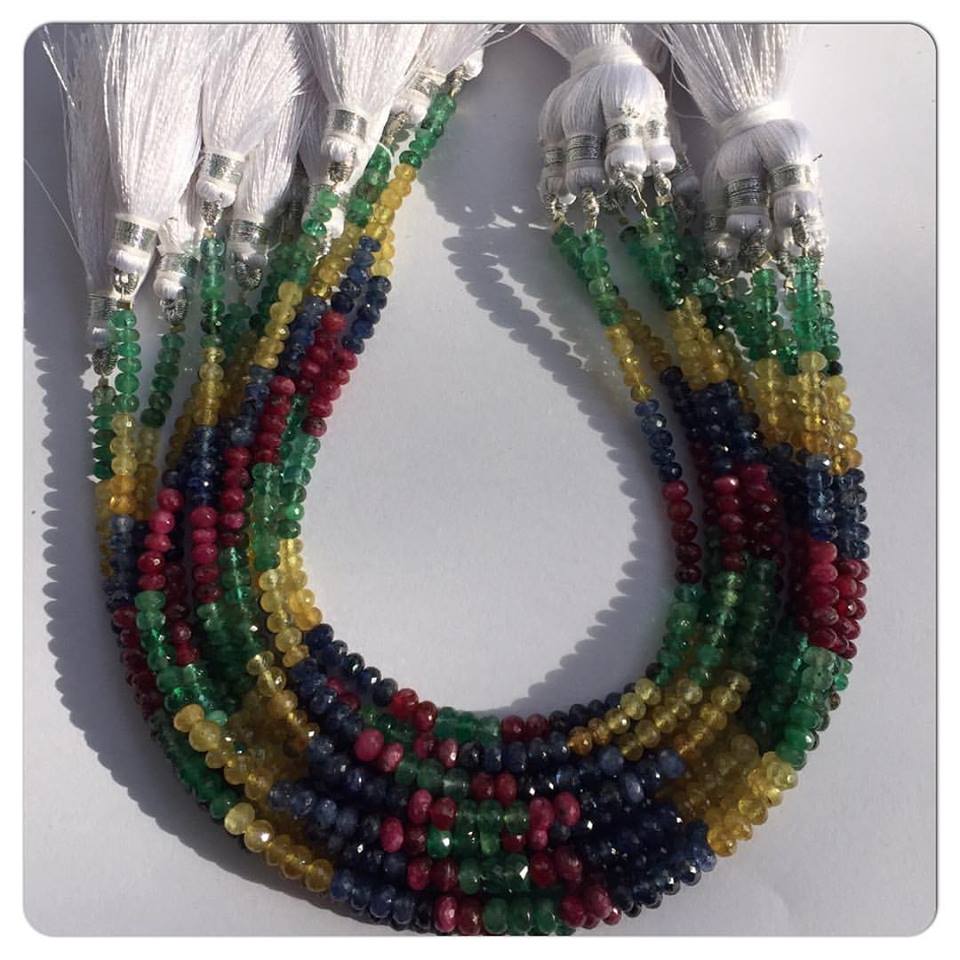
Let us review how heat treatments with and without additives work, and why they are important in gem studies.
Heat Treatments without additives:
Natural gemstones command higher price than those manufactured artificially. Natural stones may not be perfect in terms of their brilliance and crystalline structure, but their origin is all that matters. Gems created in labs have lower value primarily because they may not give the same healing benefits that they are known for.
Heat treated rubies beads and sapphires are common, and they are respected for their consistency and suitability in different applications. They are heated under specific temperatures, glazed in condition that is free from impurities of any kind. Depending on the amount of oxides and the colour-bearing properties, rubies and sapphires exhibit the same beauty as their natural counterparts.
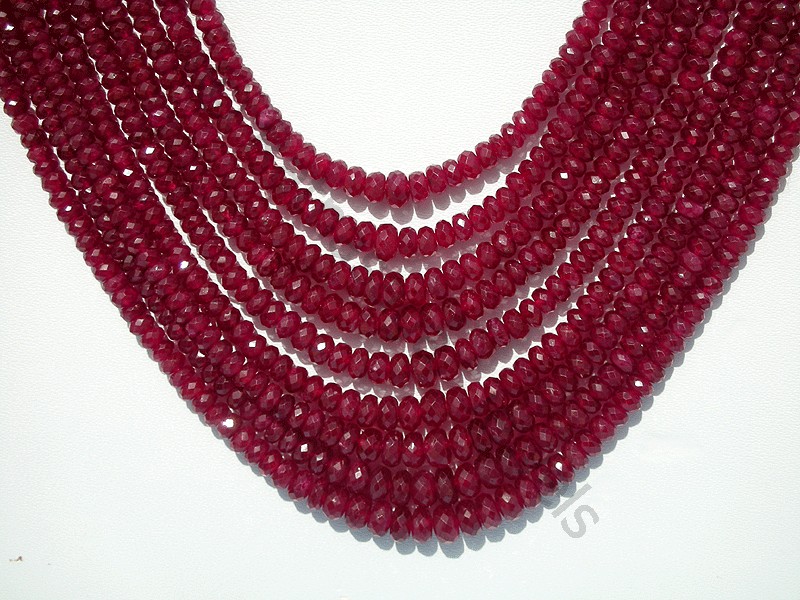
It is important to note that sapphires and rubies are heat treated using different agents. Heat treatment for sapphire gems is carried out in reducing process, while rubies are heat treated in an oxidizing environment.
Heat Treatment with additives:
The heat treatment process using additives is not illegal, but it affects the commercial viability of a gemstone. All gems have to be necessarily subjected to inspection by leading gem quality testing labs, and this is where additives are named.
The most popular gemstone treatment processes using additives for rubies and sapphire are:
Lead Filling:
Also called fracture filling, this process is utilised to cover up the fissures and cracks. Rubies and sapphires with dull and rough appearance are infused with lead to produce high refractive indices. It can be used for opaque gems as well, which after lead filling result in brilliant transparent or translucent/ milky stones.
Cheap rubies are available in the market, and they are more often than not, lead filled. Moreover, this additive process is actually reversible. Lead filling for gemstone has been rendered as hazardous, as lead is a carcinogen.
Recrystallization:
In order to enhance the transparency and improve the refractive index, rubies and sapphires are made to undergo recrystallization. The first known synthetic ruby was actually produced using this process. Geneva Ruby in 1886 made headlines, but it turned out to be a reconstructed gem. Same process is used to produce emeralds.
Beryllium Treatment:
An accidental discovery led to the commercialization of this process. Between 2000 and 2006, the market was full of richly coloured padparadscha sapphires. Lab testing proved that they were actually orange sapphires, diffused with beryllium ions. Even in natural stones, sapphires have been found to contain significant amount of beryllium impurities.
bb9a468b-861a-43b8-81d7-ffa3bb68f6e1|0|.0|27604f05-86ad-47ef-9e05-950bb762570c
Tags
: Sapphire Gemstones . Rubies beads . Rubies Gemstone Beads . Sapphire beads
Different gemstones exhibit a varied reaction to different types of treatments. One of the most popularly used treatments to produce brilliant gemstone is the process of irradiation. Light blue topaz gemstone turns into dark brown after radiation. The same brown topaz gemstone is reversed to its original blue colour by exposing it to a controlled heat treatment under specific conditions of temperature, pressure and catalysts.
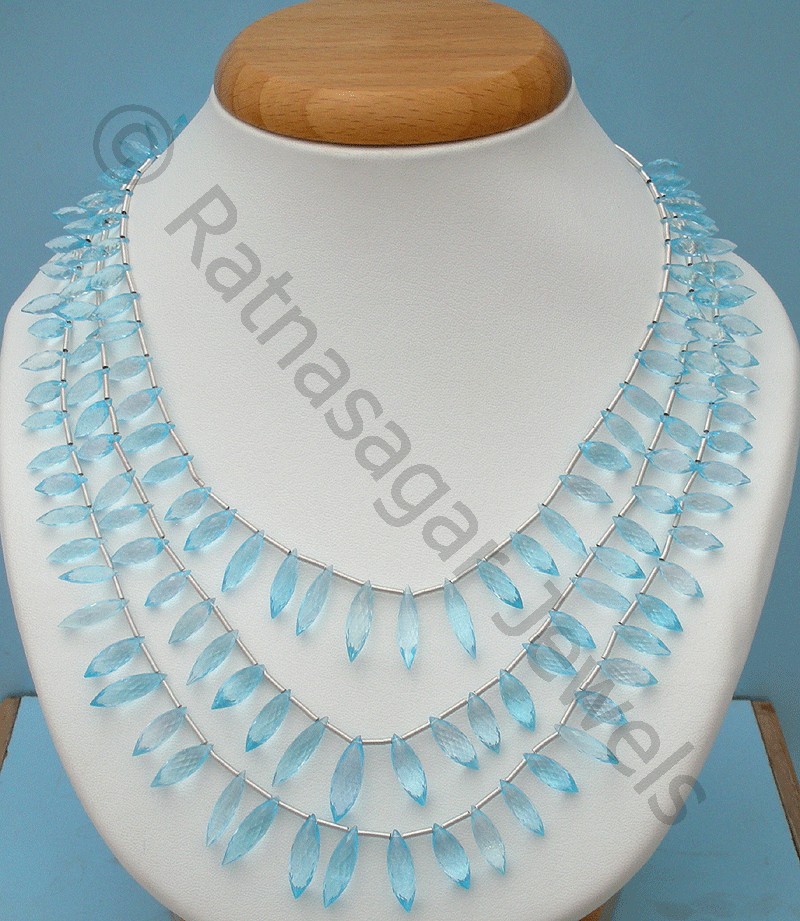
What is irradiation?
Irradiation is just a miniature controlled nuclear attack on the gemstones. Imagine the crystal structure as the target, and a series of gamma ray bombs hit specific spots inside the gemstone. The bombardment of the gamma rays alters the colour of the gemstone significantly, without actually making little or no difference to other physical aspects like hardness or density.
Irradiation can lead to both addition and removal of certain ingredients in the structure leading to change in hue. There are certain colour centres within the crystal structure that give different shades when bombarded with gamma rays. That is why irradiation of gemstones is achieved not by trial and error, but using specific nuclear kits.
Does irradiation cause any kind of damage to the precious gemstone?
Basically, the process of irradiation is a great way to produce brilliant gemstones from rather disappointingly dull stones using no physical force. When the gamma rays hit the colour centres within the crystal structure, the cells are knocked out in a random motion. The systematic process of irradiation can produce brilliant colours which are permanently restored and made more attractive by exposing the stone to heat and pressure.
Is irradiation a permanent process?
The fact that gemstones irradiated using gamma rays are produced under intense temperature makes them a permanent item to wear. The colour is long sustaining and can possibly be reversed to its original shade by applying an equally high bounty of energy. It is certainly an irreversible colour transformation process as far as irradiated gemstones like topaz are concerned.
Is irradiation a costly affair?
Of course it is! Otherwise, all the blue topaz available in the market would look like brown speckled stones with absolutely no commercial viability. Almost 95 percent of the blue topaz are irradiated and treated with heat before they get their signature shade.
Irradiation is done using highly powerful nuclear bombardment machines that cost millions. Only organizations having certificate to operate a nuclear machine can use it. Moreover, it requires skilled gemologists and operators who understand both aspects of gemstone properties and nuclear physics.
Thus, the cost of irradiation of gemstone is a pricey affair. But it ensures that the end consumers get only high quality gemstone produced from natural extracts and polished by skilled professionals.
Are there certificates to tag irradiated stones?
Yes, there are different certifications offered across all continents to ensure gem quality. It also ensures that none of the gemstones have turned radioactive. The major certifying units are GIA, AGS and other renowned gemstone research labs.
b8612fef-652b-4977-8994-846f5921e352|0|.0|27604f05-86ad-47ef-9e05-950bb762570c
Tags
: Brown topaz gemstones . Blue topaz gemstone . Wholesale Gemstone Beads
Apatite is one of the most underestimated gemstones, considering the family it belongs to. A cool blue gemstone that derives its name from Greek word meaning “deceitful stone”, apatite is a misleading rock owing to its resemblance to other blue rocks like aquamarine beads, beryl, topaz gemstone and fluorite. Polishing and heat treatment with enhancing agents can make them deceivingly appear like sapphires and lapis lazuli.
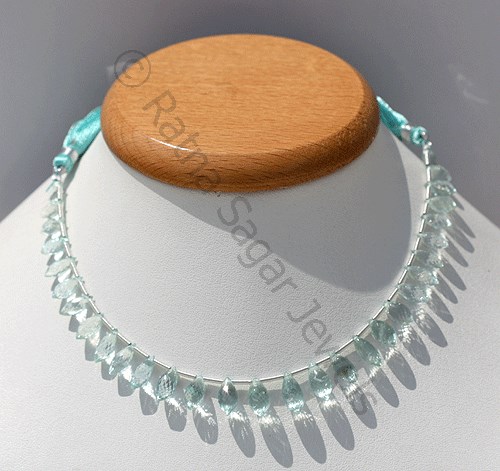
Let us explore the gemstone, which is everything but not deceiving.
Beads of power:
Apatite gemstones are popular, only next to tourmaline. They have a hardness of 5 on Mohs scale, which makes them an easy candidate for cutting and shaping into desirable shapes. Clear cut apatite exhibit cat’s eye effect or chatoyant phenomena. Presence of rutile give it the exhilarating effect.
Extra-terrestrial stones:
Oh yes... apatite gemstones don’t have an earthly origin. They are believed to have been carried to Earth by meteors and comets that crashed onto the surface millions of years ago. The presence of apatite on many outer planets in fact signify the presence of water, much like what we have on earth!
In terms of astrophysics, apatite is definitely a high priced commodity to reckon with.
A dreamer’s stone:
For peaceful sleep, gem collectors embrace apatite as it is known to induce tranquillity. It also improves hunger and soothes the digestive system. For higher level of concentration and better balance in life, apatite beads and bracelets are embraced for a long lasting effect.
Apatite varieties:
Popular varieties of apatite are green apatite, Asparagus stone, neon blue-green apatite and samite apatite blends. Since, the gemstone market is full of heat treated apatite, it is usually considered safe to buy only light shaded rocks.
Impregnated by rare minerals:
One of the rarest forms of apatite are found in Hoidas Lake, Canada. The speciality of the apatite extracted from these areas is that it is loaded with rarest of the rare minerals like dysporium, allanite, tonalitic gneiss. In fact, apatite in this part of the world falls in the category of “rare earth mining project”.
Colours to die for:
Apart from the scintillating tropical blue green shade, apatite gemstones are also found in apple green and sea blue hues. The rare blue shade apatite is actually known as “Moroxite”, and is a high priced gemstone. It is often produced by heating the light coloured mineral.
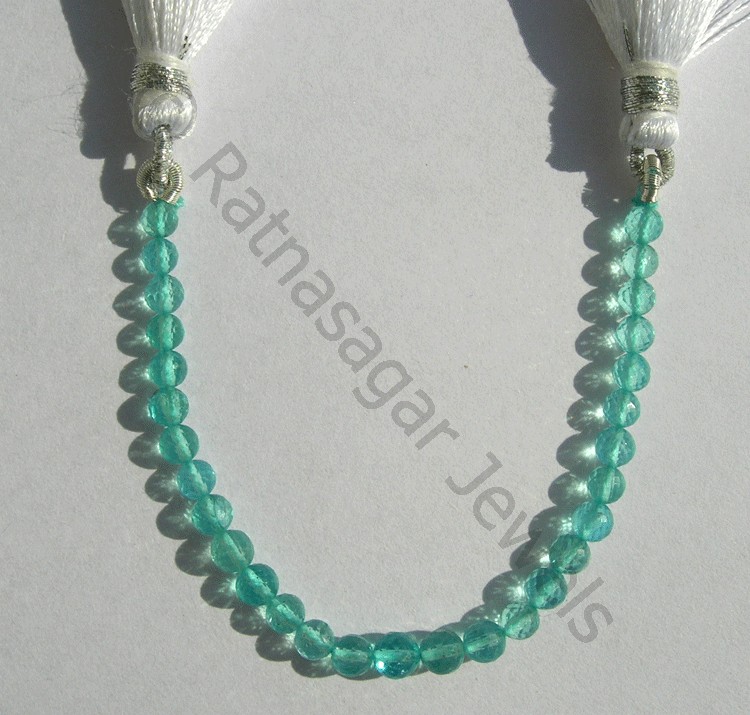
Cuts and shapes:
Apart from the usually beads and rounded apatite, the gemstone is also cut into cabochon and placed in doublets and triplets for an enhanced brilliance. Chatoyant apatite gemstones are not treated artificially and often sold in high-class market at prices $ 150 and more per carat.
Life of the stone:
Despite its relative softness compared to other blue gemstones, Apatite can survive force and corrosive reactions. Pure untreated apatite are susceptible to bio-leaching where the constituents of the stone corrode away due to the action of micro-organisms.
However, there are many dimensions of apatite in the gemstone market that makes it a very good item to collect and adorn.
a7eb8d3b-2a22-405e-bb2f-1cbcef49a6a6|0|.0|27604f05-86ad-47ef-9e05-950bb762570c
Tags
: Aquamarine beads . Blue topaz gemstone . Apatite gemstones . Apatite Beads
Technology has made the world colourful. And we say this because of new-age gemstones making their legitimate entry into the market backed by stamp of purity, clarity and brilliance. Impregnated gemstones are flawless rocks with minimum tolerance for cracks, gaps and air bubbles. Porous gemstones are often heat treated in presence of doping agents and dyes to gain a superlative clarity and colour. A mix of chemical action and annealing gives impregnated gemstones their signature maturity.
Why do gemstones require enhancement?
Only 1 percent of natural gemstones meet the benchmark values of clarity, colour consistency and physical durability. Dealing in high priced gemstones makes enhancement process even more important.
Enhancement of gemstones is done to fill up cavities, define outlines of crystalline structure and make cutting relatively easy. Porous gemstones are hard to cut, and enhancement using resins and fillers render a degree of durability to the rocks after treatment.
Impregnation as a method of stabilization:
Impregnation turns a relatively porous gemstone into a durable item. Even the inexpensive rocks are then dyed and coloured to derive a good quality gemstone, exuding classical brilliance often displayed by traditionally precious gemstones.
Impregnated gemstones available in the market are:
They are first bleached and then impregnated to boost the clarity and shine. Dyed and impregnated jadeite are classified as D-Jade. The impregnated jades display higher refractive index, with sturdy crystalline structure.
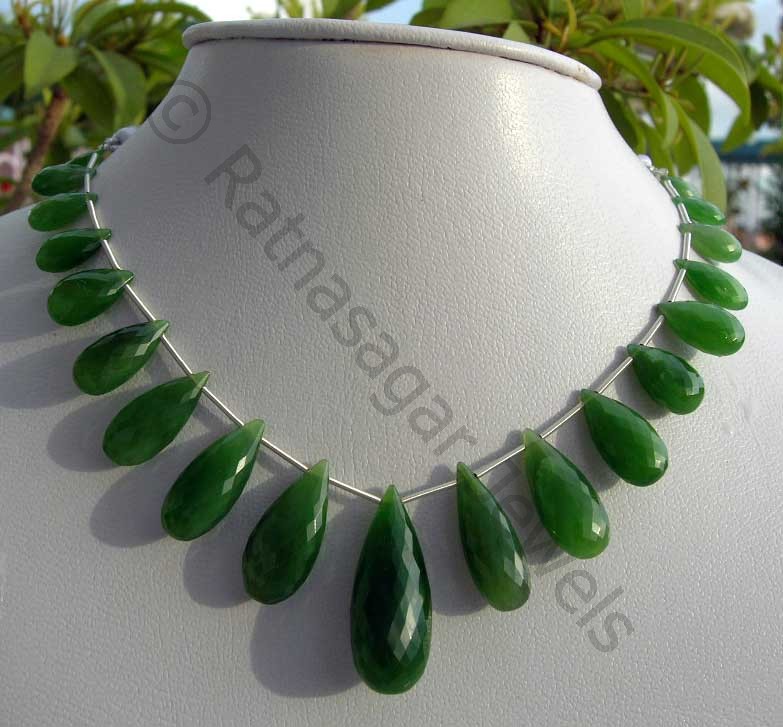
The treated jade are detected only under high magnification IR Spectroscope.
Hardened resins and beeswax are used as fillers in treating flawed turquoise. The trademark Zachary treatment is exclusive impregnation process that involves addition of chemical fillers to semi-precious stones and then heating them in an oven. Impregnated turquoise gains a sparkling colour with a hard-wearing structure that does not chip away during cutting and machining.
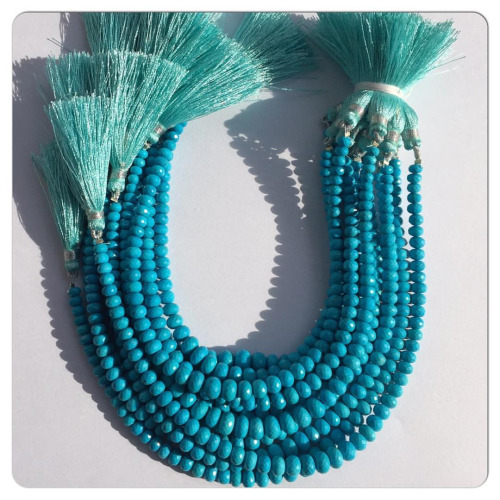
Lead glass filling is rapidly making an inroad into the mainstream gemstone market. Despite its notoriety as a hybrid process, rubies and sapphire gemstone with major flaws are increasingly added with lead glass fillers. The accepted percentage of impregnation is less than 30 percent.
A very popular coating process, black onyx derives its signature shade from the lacquer and silica polymer impregnation.
Techniques to identify impregnated gemstones:
Spotting and inclusions are visible under high magnification spectroscopy. The colour concentrations also vary for an impregnated gemstone.
Some fillers light up exhibiting florescence when exposed to rays which appear distinct from the host stone surface.
Fillers and host gemstone structure have distinct heat zones when exposed to higher temperatures.
Gemstones impregnated with balsam and cedar oil exude a signature odour when exposed to high temperature. It is a ballpark method though.
Conclusive results are obtained through X-ray diffraction and Raman Spectroscopy, but they involve very high cost of operation.
All gemstone regulating organizations like GIA, AGTA and CIBJO ensure that consumers get quality gemstones, and not compromised rocks.
e564b2d5-c85c-4c2f-aa6f-86484be0c5b8|0|.0|27604f05-86ad-47ef-9e05-950bb762570c
Tags
: Nephrite Gemstones . Turquoise Gemstone beads . Turquoise Gemstones . sapphire gemstone . Black onyx Gemstone